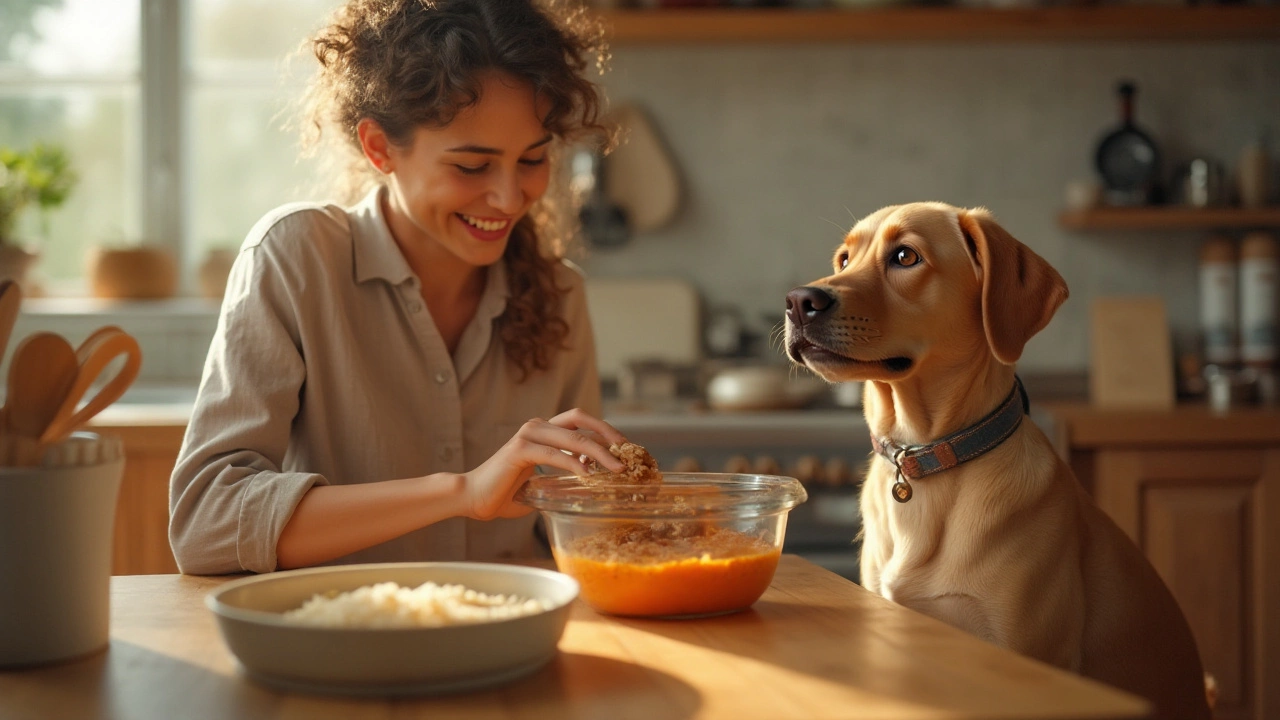Rice for Dogs: What You Need to Know Before You Serve It
Thinking about adding rice to your dog's meals? You’re not alone. Many owners use rice as a cheap, bland base when the stomach is upset or when they want a simple carbohydrate. It works, but only if you do it right.
Why Rice Can Be Good for Dogs
White rice is easy to digest. It can calm an upset tummy, especially when paired with boiled chicken. The carbs give quick energy, and the low fibre means it won’t irritate a sensitive gut. For puppies that need extra calories, a small scoop can help.
Brown rice adds a bit more fibre and nutrients like magnesium. Some vets recommend it for dogs that need better bowel regulation. However, it takes longer to cook and can be harder for a dog with digestive issues to handle.
How to Serve Rice Safely
Always cook rice plain. No salt, butter, garlic, or onions—those are toxic to dogs. Use a 2:1 water ratio for white rice and a 2.5:1 ratio for brown. Bring to a boil, cover, simmer until soft, then let it cool.
Portion size matters. A medium‑size dog (around 20 kg) can handle about half a cup of cooked rice per meal. Larger dogs can go up to one cup, while small dogs should stick to a quarter cup. Adjust based on activity level and weight goals.
Mix rice with protein. A common recipe is 50 % rice, 30 % lean meat (like chicken or turkey), and 20 % veggies (carrots, green beans). This keeps the meal balanced and tasty.
Watch for signs of intolerance. If your dog starts coughing, has gas, or shows loose stools after eating rice, cut back or stop it. Some dogs are allergic to grains, even rice, so keep an eye on reactions.Store leftovers properly. Put the cooked rice in an airtight container in the fridge and use it within three days. Warm it up slightly before serving—cold rice can be unappealing.
Use rice as a temporary solution, not a permanent staple. Dogs need protein, fats, and essential nutrients that rice alone can’t provide. Rotate with other carbs like sweet potato or oatmeal for variety.
If your dog has a medical condition—diabetes, kidney disease, or pancreatitis—talk to your vet before adding rice. The extra carbs could affect blood sugar or strain the kidneys.
Overall, rice is a useful tool in a dog owner's kit. It’s cheap, gentle on the stomach, and easy to prepare. Just remember to keep it plain, serve the right amount, and watch your pet’s reaction.
Got more questions about feeding rice or any other dog diet topics? Ask your vet, and check out the rest of our guides for more practical tips.
- Morgan Ainsworth
- 0 Comments
Best Remedies: Pumpkin vs. Rice for Dogs with Diarrhea
Choosing the right remedy for a dog experiencing diarrhea can be challenging for pet owners. Both pumpkin and rice are popular home treatments that provide gentle relief. This article explores the effectiveness of pumpkin and rice as remedies, their nutritional benefits, and guidelines for use. Knowing when and how to offer these options can help your furry friend recover more comfortably. Discover useful tips and insights to keep your pet healthy and happy.
View More
